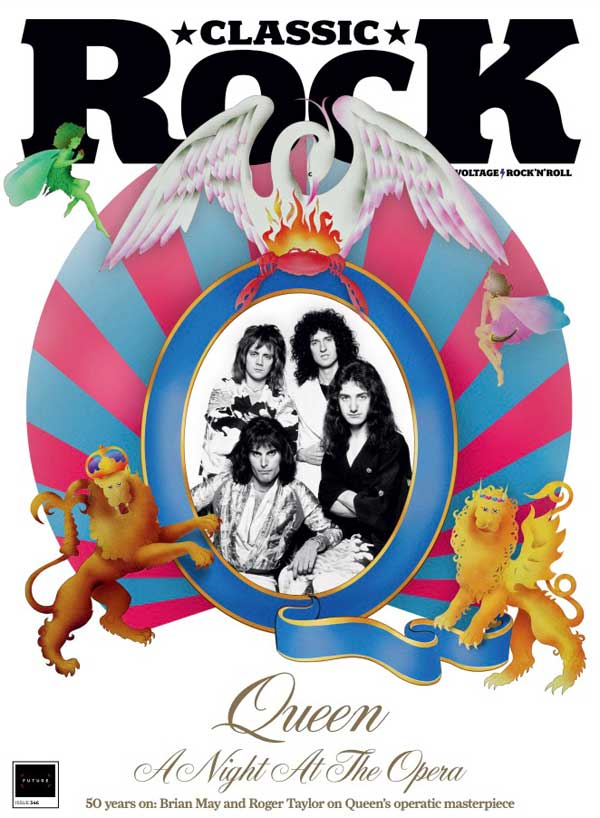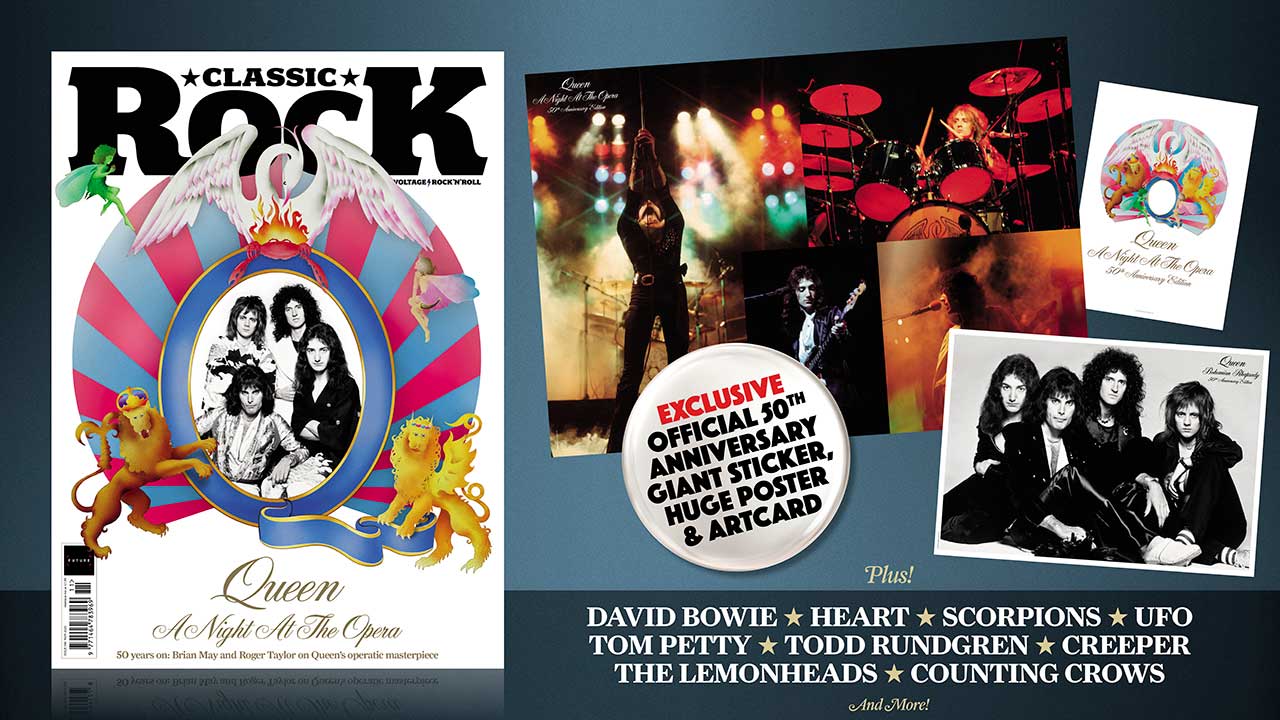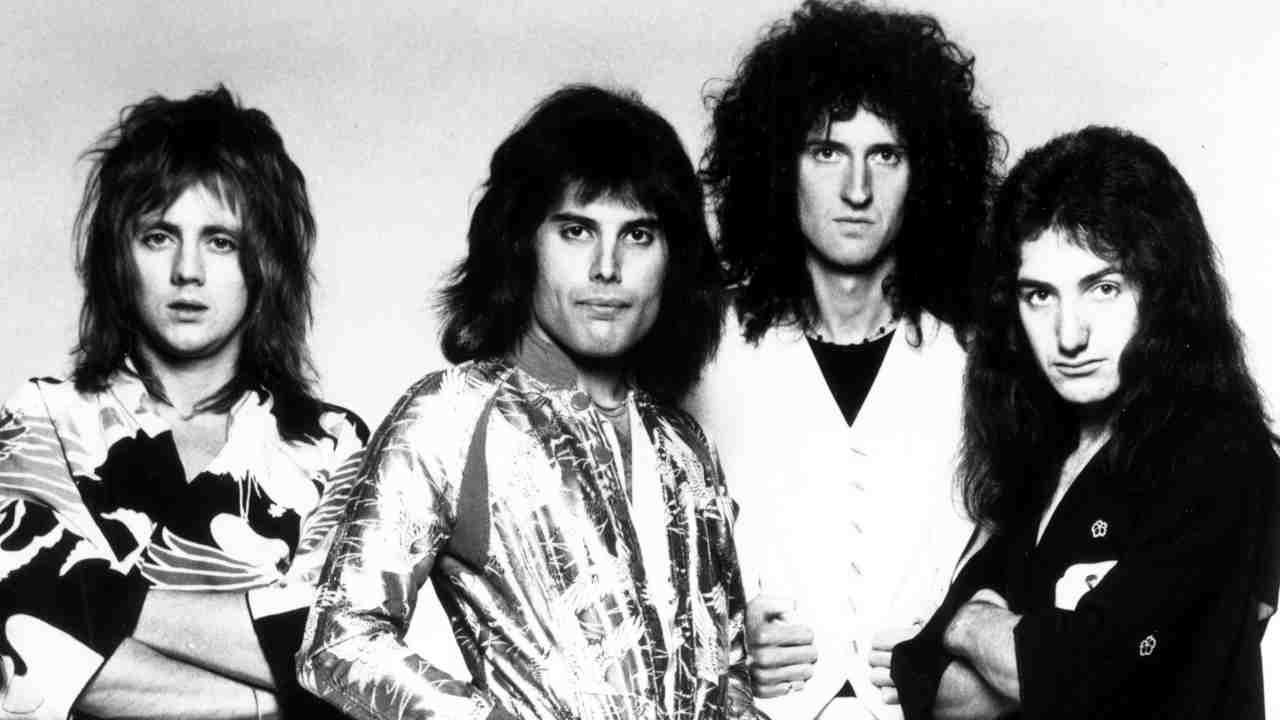
(Image credit: Future)
There has never been another song like Bohemian Rhapsody. The cornerstone of Queen’s 1975 album A Night At The Opera, Freddie Mercury’s multi-part operatic rock fever dream spent nine record-breaking weeks at Number One in the UK singles chart.
Following Mercury’s death in 1991, it returned to the top of the UK charts and reached Number 2 in the US, and it was subsequently immortalised in an iconic scene in the movie Wayne’s World.
Fifty years after it was first released, the song remains as famous as ever – and just as unique. Other songs have matched its grand scale, but few have come close its sheer inventiveness.
You may like
In the brand new issue of Classic Rock magazine, Queen guitarist Brian May and drummer and Roger Taylor mark the 50th anniversary of A Night At The Opera by looking back on the making of the album and its most famous song.
Bohemian Rhapsody was Mercury’s brainchild, famously divided into three separate sections, capped by a short outro. The first section sees an anguished Mercury at the piano, confessing his guilt to his moth after killing a man, while the dramatic and heavy final section found the singer raging against his own impending death.
But it was the operatic middle section that truly set Bohemian Rhapsody apart. Legend has it that the first time the singer played an early version of the song to Roy Thomas Baker, he stopped halfway through and said, “And this is where the opera bit comes in.”
The producer later said he laughed at Mercury’s outrageousness (the singer admitted he knew virtually nothing about opera).
In the new issue of Classic Rock. Roger Taylor remembers the band meticulously piecing together the song as they worked on it in Rockfield Studios, Wales.
“As we were constructing the opera bit, we were getting more and more wild: ‘Stick a bit more on, stick another bit it, it’ll all be fine when it gets to the heavy section,’” says Taylor.
“And it was. We were planting our flag in the ground: ‘This is really us – it’s a bit mad but it’s got everything in it’.’”
You may like
Bohemian Rhapsody certainly sounds radical, but Brian May tells Classic Rock that the band were unfazed by it when Mercury brought it to them.
The guitarist points to two specific songs that Queen had recorded earlier in their career that paved the way for Mercury’s six-minute opus.
“People have a hard time understanding how unsurprising Bohemian Rhapsody was to us,” May tells Classic Rock. “‘If you look at the first album, you’ve got My Fairy King, which is very complex and goes all over the place.”
“And then you’ve got March Of The Black Queen on the second album, which is enormously complicated. It’s way more complicated than Bohemian Rhapsody.
“So it wasn’t that much of a surprise to us. It was just: ‘We’ll do another one of these things.’”
The songs May refers to, My Fairy King and March Of The Black Queen, were both written by Mercury and featuring similarly ornate structures.
The former appeared on 1973’s self-titled debut. It’s reputedly one of the first songs the singer wrote after joining Queen. The studio version features an early example of the vocal overdub technique that Queen would use on Bohemian Rhapsody.
March Of The Black Queen appeared on the following year’s Queen II and is even more involved. “That song took me ages to complete,” Mercury later said of the six-minute song. “I wanted to give it everything, to be self-indulgent or whatever.”
While neither song enjoys the same success or profile as Bohemian Rhapsody, they remain key stepping stones to Queen’s most famous song.
Read the full story of Queen’s A Night At The Opera in the brand new issue of Classic Rock, on sale now. Order it online and have it delivered straight to your door.

(Image credit: Future)

